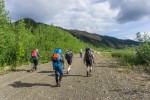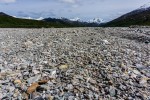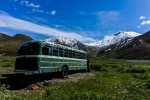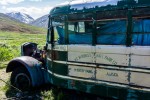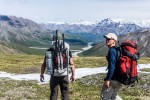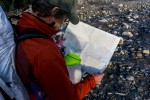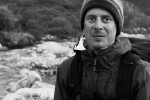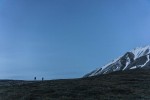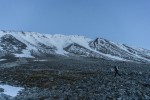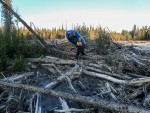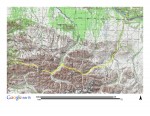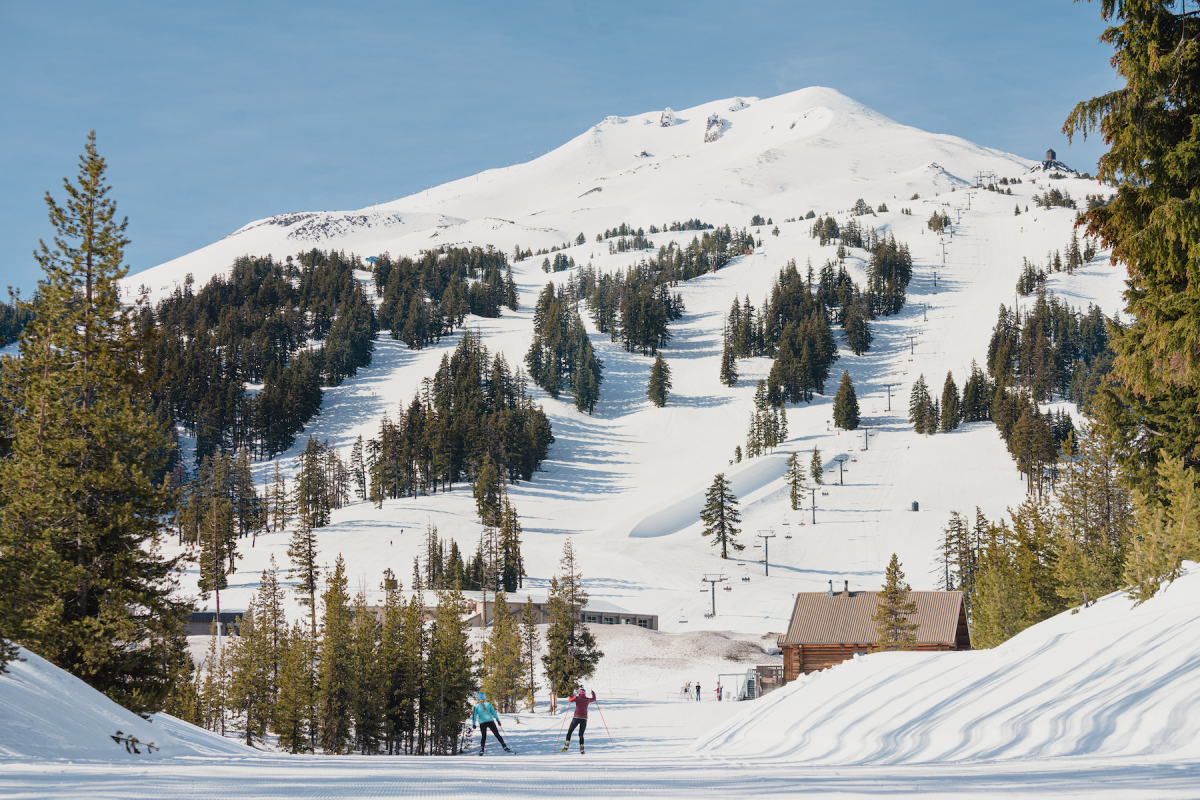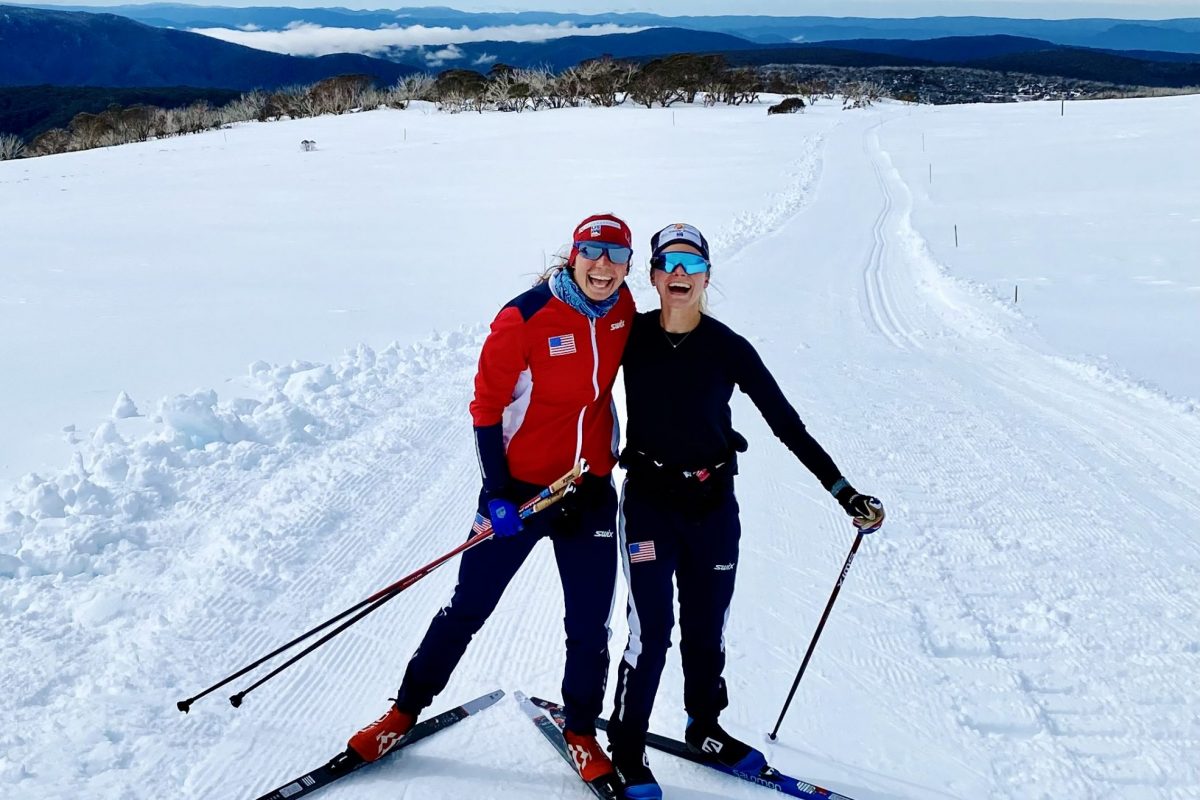In mid-June, I competed in a wilderness race across the north side of the eastern Alaska Range. The race, called the AlaskAcross, is a point A-to-B format that is gaining popularity in the state. I was coming back from work and injury and wasn’t feeling fit enough to be very competitive, but I knew that it would be fun, and so I entered to see what would happen. It was the first year using this route for the AlaskAcross (which rotates courses irregularly), and it turned out to be a beautiful course, well-suited to wilderness racing. I hope the popularity of the event increases. The overall winners were Andrew Cyr, John Harley and Jeremy Vandermeer in 31 hours, 44 minutes. A summary of the event ran in the Fairbanks Daily News Miner.
There is something unique about wilderness racing.
Bob, Drew and my steps up through the tundra had begun to drag. Late night is always the crux – it’s when your brain is sending the strongest signals that you should be sleeping – and for us late night happened on the biggest climb of the trip. I was excited because we’d just seen the unmistakably asymmetrical lope of a wolverine running across the tundra, but I knew that neither another caffeine pill nor the beauty of our surroundings could wipe the fatigue from behind my eyes. I’d have to wait for sunrise, just a couple of hours away, to hit my eyes and wipe away the greyness of the sub-arctic “night”. And in the meantime, I’d have to take another step. And another. And another.
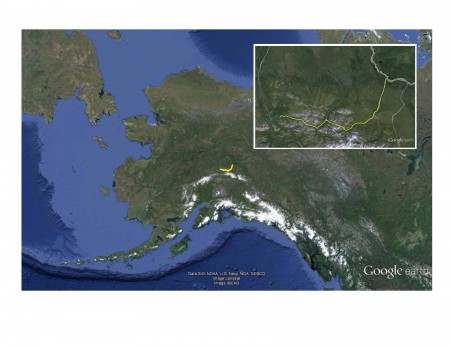
We were racing in the AlaskAcross, a Fairbanks-based wilderness race. It’s a point-to-point race, where the only rules are that travel has to be human-powered, and can’t follow the road corridor. We started just east of Healy, along the Healy River, and ended at Lost Lake, on the Richardson Highway about an hour from Fairbanks. If it wasn’t a race, the trip would take the better part of a week.
“I wanted to cap it at 100 miles,” Mark Ross, the race organizer and mastermind of the course, said in an offhand comment. “So that it fits into a weekend.”
Fitting 100 miles of cross country travel into a weekend means no sleep. We walked up the Healy River, across Cody Pass, to the Wood River. That was about 27 miles. We floated down the Wood River for about seven miles, then hiked overnight up Kansas Creek and dropped into an unnamed creek to the West Fork of the Little Delta, another 15 or so miles. On the shores of the Little Delta we stopped to look at a map. A sudden wave of dizziness struck me, and I dropped immediately to my knees to avoid falling over.
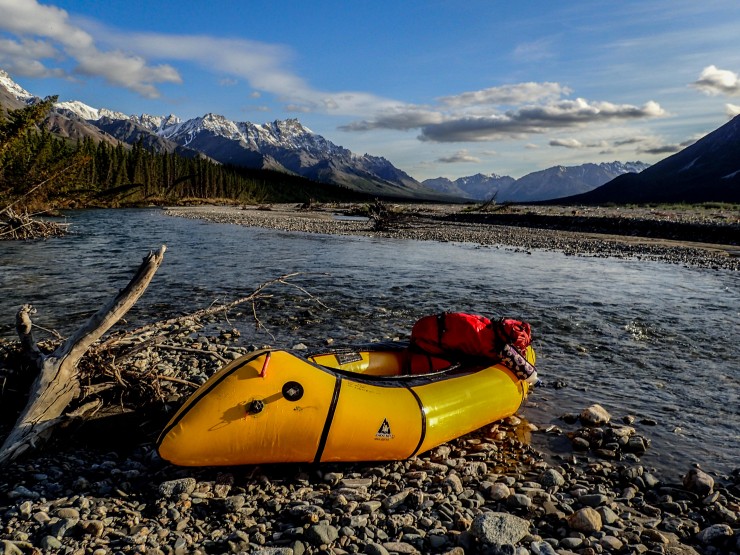
“Are you going to be okay?” Bob said, concern pinching his voice.
“I think so,” I said, rising unsteadily back to my feet. “I think… I think I just feel shitty.”
Bob Gillis and Drew Harrington started as a team. I started as a solo racer. But we were going the same speed, and so eventually the pretense of being competitors was dispensed with entirely. We’re all friends, and this was not our first time being strung out in a wilderness race together. I needed their encouragement. And I wanted to look over their shoulder at their maps, too.
We looked apprehensively toward the river. “Would it or wouldn’t it?” we wondered. Would it have enough water to float the packrafts we’d carried all this way? Thirty-five miles of cobble river beds had taken their toll on our feet, and the idea of walking down river an unknown distance to find sufficient flow wasn’t something any of us wanted to consider. It was 6am on Sunday, we were in the Hayes Range and we were headed to the far side of the Tanana Flats, 50 river miles away. We wanted to be done that day.

The West Fork had enough water, but barely. The emotional crux of the trip was the butt-dragging down the river in our tiny boats. Our butts constantly bounced off rocks, and each of the hundreds of times we had to get out after being grounded on a gravel bar was one more aggravation.
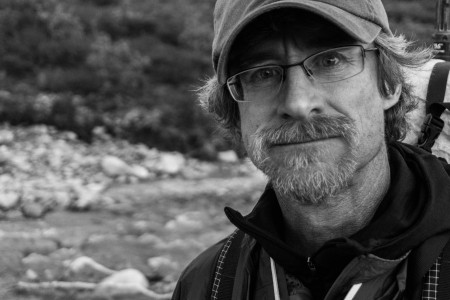
Nodding off in the boat became common. But once in the faster current of the Little Delta, the miles sped by. We followed each other, and when one person chose the wrong river channel they got fired from their job, and another of us took over.
We took out together late Sunday night on the banks of the Tanana River. We packed our boats and thrashed through the woods to get to the finish line at Lost Lake. It wasn’t supposed to be far, but it felt like an eternity. Eventually, we stumbled into the Lost Lake Boy Scout camp together. But for the final walk down the road through the camp, I couldn’t keep pace. My soaked socks and water-softened skin had me hobbling on blistered feet. When I arrived at the Lost Lake boat launch at nearly 2am on Monday, Bob and Drew had their shoes off. According to Drew’s GPS we had gone about 108 miles.
I took the clipboard that Mark had stashed behind the sign board at the boat launch, and wrote my official finishing time down with Bobby and Drew’s: 39 hours and 54 minutes.
–Seth Adams is a contributing reporter to FasterSkier



